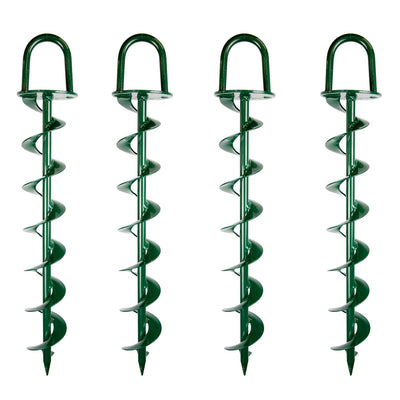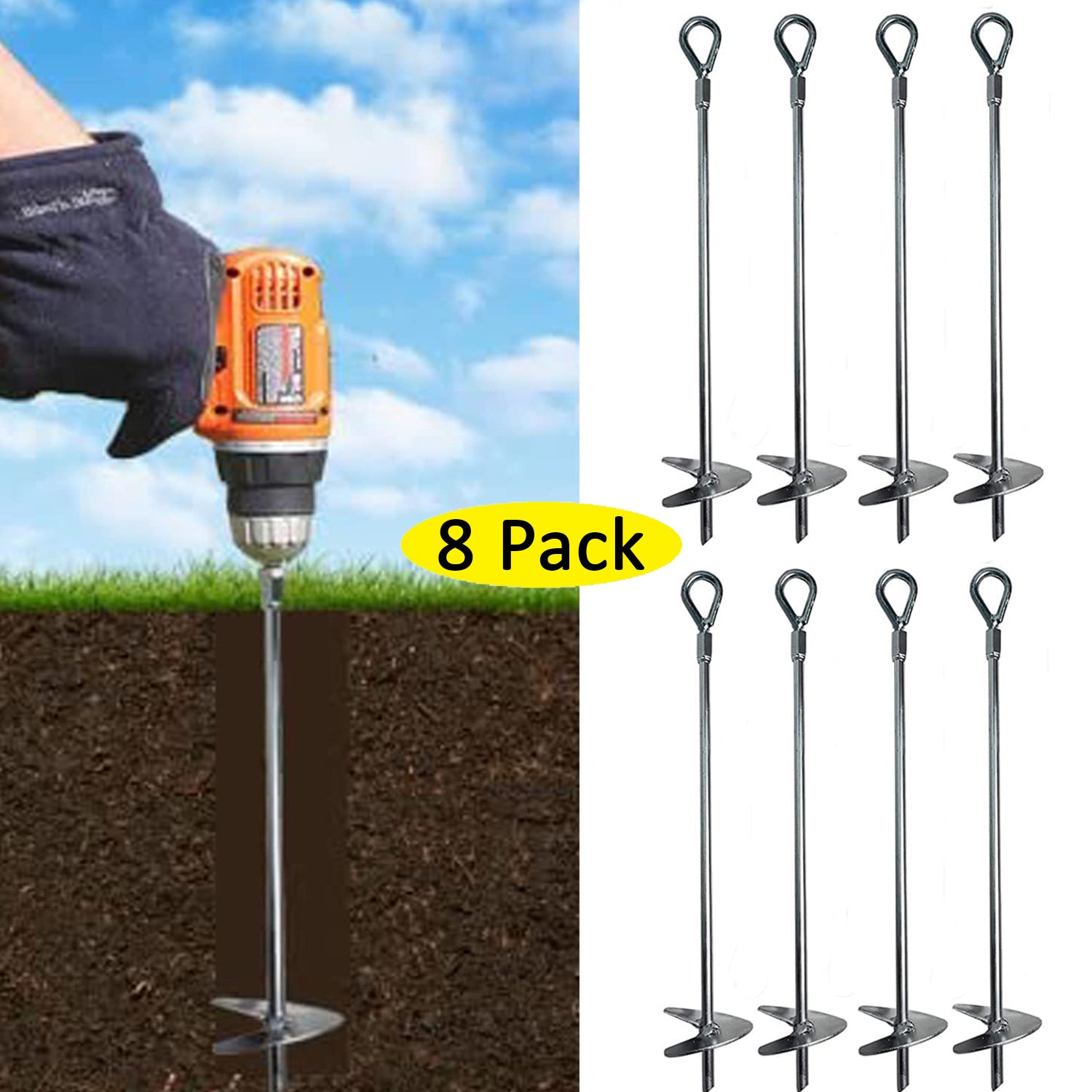Why You Should Use a Strong Ground Anchor for Enhanced Stability
Why You Should Use a Strong Ground Anchor for Enhanced Stability
Blog Article
Check Out the Various Sorts Of Ground Support for Your Following Task
When starting a construction or landscape design project, comprehending the numerous sorts of ground anchors offered is essential to ensuring both security and resilience (Ground Anchor). From auger anchors, which master diverse dirt conditions, to stake anchors developed for short-term installations, the options are many. In addition, concrete and screw anchors present unique advantages in specific situations, while deadman anchors are customized for applications requiring resistance to lateral pressures. The option of an ideal anchor type can significantly affect the general success of your project, motivating more exploration into their respective advantages and applications.

Auger Anchors
Auger supports are a prominent selection in various building and landscaping jobs as a result of their special layout and reliable anchoring capabilities. These anchors contain a helical screw-like shaft that is driven into the ground, permitting a steady and safe hold. The spiral style assists in very easy setup and maximizes resistance against side pressures, making auger supports especially effective in applications such as fencing, short-term frameworks, and disintegration control.
The setup process of auger supports is reasonably uncomplicated. Auger supports can be conveniently gotten rid of and reused, which includes to their cost-effectiveness and sustainability.
Among the significant benefits of auger supports is their capacity to disperse lots uniformly throughout the surrounding dirt, reducing the risk of dirt disruption and decreasing environmental effect. Furthermore, they are less prone to loosening up or heaving gradually compared to standard anchoring techniques. As a result, auger anchors are an exceptional selection for tasks needing reputable and long lasting anchoring options.

Stake Anchors
When it pertains to protecting frameworks in a selection of outside applications, stake supports offer a uncomplicated and trustworthy solution. These supports are generally constructed from long lasting materials such as steel or aluminum, made to endure environmental anxieties while offering optimum security. Their straightforward design enables quick installment, making them an ideal choice for long-term or temporary anchoring demands.
Risk supports are specifically useful in securing tents, canopies, and other light-weight frameworks against wind and weather. They work by being driven into the ground at an angle, creating a strong hold that withstands pull-out pressures - Ground Anchor. The effectiveness of stake anchors depends upon numerous aspects, including dirt kind, moisture web content, and the angle of setup
For added safety and security, numerous risk anchors feature accessory factors for ropes or bands, permitting stress changes as essential. In applications such as landscape design or building and construction, they can efficiently stabilize tools or structures on uneven terrain. Generally, stake supports supply a cost-efficient and functional service for securing various outside setups, making them a recommended selection for specialists and do it yourself fanatics alike.
Concrete Anchors
Concrete supports provide a robust service for securing structures to concrete surface areas, guaranteeing stability and safety in different applications. These anchors are necessary for projects varying from domestic building and constructions to large commercial setups. They come in different kinds, including expansion anchors, glue anchors, and undercut supports, each made for details tons read more requirements and environmental conditions.
Sticky supports make use of high-strength epoxy or material to bond the support to the concrete, supplying exceptional load-bearing capacities, particularly in cracked concrete scenarios. Undercut anchors create a distinct form within the concrete, supplying exceptional holding power, specifically in applications where tensile lots are widespread.
When carried out properly, concrete supports considerably boost the structural stability of numerous tasks, making them important in modern building methods. Recognizing the certain requirements of your job will certainly aid in picking the best type of concrete support for the job.
Screw Anchors

Screw supports are a versatile securing service that can be efficiently utilized in a selection of applications where traditional concrete supports might not suffice. These supports contain a helical design that enables them to be easily driven right into the ground, making them suitable for usage in dirt and various other substrates. Their special framework supplies outstanding holding power and resistance to pull-out forces, making them suitable for countless jobs, from landscaping to architectural support.
One of the key advantages of screw supports is their convenience of installment. They require very little equipment and can frequently be mounted without the requirement for excavation, which conserves both time and labor prices. In addition, screw supports can be gotten rid of and recycled, using a sustainable remedy for temporary applications.
Screw supports are especially useful in locations where soil conditions are challenging, such as loose or sandy soils. Their capability to be installed at varying depths enables modification based on details task needs. In general, screw supports supply a efficient and Clicking Here reputable anchoring technique, making them an exceptional choice for designers and specialists looking for efficient services for their projects.
Deadman Anchors
Deadman supports act as a durable solution for stabilizing structures in challenging problems, especially where standard anchoring methods may fail. These anchors are composed of big, heavy items buried underground, which create resistance versus side forces. The layout commonly involves a straight element, such as a block of concrete or a steel plate, hidden in the soil, to which wires or bands are attached.
The effectiveness of deadman supports depends on their ability to disperse loads over a bigger location, minimizing the risk of failure in unstable dirt problems. They are especially advantageous in applications such as maintaining wall surfaces, short-lived frameworks, and slope stabilization, where dirt activity can compromise the honesty of the framework.
Installment of deadman anchors needs mindful preparation to guarantee they are positioned at the correct depth and alignment, optimizing their load-bearing capability. While they may need even more labor and product than light-weight supports, their integrity in damaging problems makes them very useful for long-term jobs. Furthermore, deadman anchors are versatile and can be adapted to numerous applications, making them a go-to option for designers encountering one-of-a-kind obstacles in their tasks.
Conclusion
In summary, choosing the ideal kind of ground anchor is crucial for guaranteeing stability and safety and security in numerous jobs. Auger anchors excel in varied dirt conditions, while stake supports suit temporary applications. For concrete surface areas, expansion and sticky anchors provide reputable options, and screw supports supply adaptability in challenging terrains. Deadman anchors are specifically effective in withstanding lateral forces for maintaining walls. Cautious factor to consider of these options will certainly boost job end results and structural honesty.
In addition, concrete and screw supports existing unique advantages in certain situations, while deadman supports are customized for applications calling for resistance to lateral pressures - Ground Anchor.Auger supports are a popular choice in various building and landscaping tasks due to their unique style and efficient anchoring abilities. They come in different kinds, including growth anchors, adhesive supports, and undercut anchors, each made for details load needs and ecological conditions
Adhesive supports utilize high-strength epoxy or resin to bond the support to the concrete, supplying premium load-bearing capabilities, particularly in fractured concrete situations. On the whole, screw supports offer a dependable Click Here and efficient securing technique, making them an exceptional option for designers and professionals looking for effective remedies for their projects.
Report this page